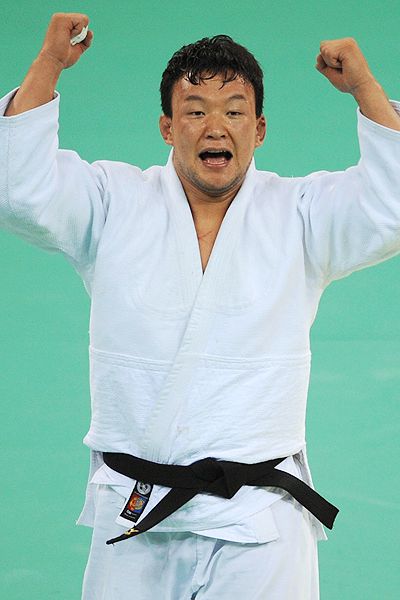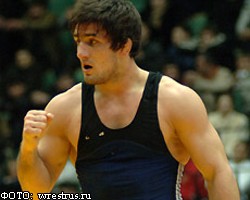 Within the strength and conditioning community there are two base philosophies surrounding physical capacity and sports.
Within the strength and conditioning community there are two base philosophies surrounding physical capacity and sports.The first is "stronger is better." Or "All other things being equal the stronger athlete wins." This is true. No matter what the sport. However, all other things are never equal.
The second is a matrix. If you partcipate in XYZ sport you need minimum strength numbers of blah, and anything more than that is a waste of time and effort. This is also true.. sort of. In certain sports results are more driven by physical attributes, others are less so.
I look at things a little differently (of course I do.. if I didn't I wouldn't still be writing).
I think of it like an airplane.
Physical capacity is the engine. It provides thrust. With enough thrust you can get a rock to fly.
The weight of the plane and payload is the specific requirements of the sport. A lighter plane needs less thrust to get off the ground and less lift to say up. A 747 needs a LOT of thrust to get in the air and a lot of lift to stay aloft.. which brings me to..
Sport specific skill is the aerodynamics of the plane. It provides lift, but also is the source of drag. With enough lift you need almost zero thrust. If you are a superior technician in a technical sport you can get away with less physical capacity. Unless your particular skills/tactics require a lot of physical capacity (that would be the drag in this equation).
So in real terms let's talk grappling:
BJJ in a gi: Very technical sport. The gi slows things down, and all the gripping points allow for leverage from many positions. Grappling on the ground (within weight classes) is inherently less attribute driven. This is a fairly light plane, and capacity is less of a factor than technical skill.

Judo: throw for ippon is a great equalizer, but strength and speed is required for grip fighting. No grips, no throw.
 Submission grappling: Technical, but less grips than gi bjj. Still a very skilled athlete can catch a more physical athlete in a submission at any time, but better athletes can positionally dominate more skilled athletes.
Submission grappling: Technical, but less grips than gi bjj. Still a very skilled athlete can catch a more physical athlete in a submission at any time, but better athletes can positionally dominate more skilled athletes. Folk style wrestling: no submissions, all about positional domination. However tactics and proper set-ups for takedowns, breakdowns, and pinning combinations are still at least equally as important as physical ability. Par terre wrestling is more technical, and folkstyle has a greater emphasis on grappling on the ground.
Folk style wrestling: no submissions, all about positional domination. However tactics and proper set-ups for takedowns, breakdowns, and pinning combinations are still at least equally as important as physical ability. Par terre wrestling is more technical, and folkstyle has a greater emphasis on grappling on the ground. Freestyle wrestling: touch pins actually make it easer for a stronger grappler to just maul his opponent, and the current rule set is singularly focused on wrestling on the feet.
Freestyle wrestling: touch pins actually make it easer for a stronger grappler to just maul his opponent, and the current rule set is singularly focused on wrestling on the feet.
Greco-roman wrestling: Don't get me wrong, at the highest levels greco is very very technical, but the physical capacity required just to be considered is astronomical.
 BJJ: Roger gracie worlds 100 kgs world champion
BJJ: Roger gracie worlds 100 kgs world championJudo: Naidangiin Tüvshinbayar - 100 kg Olympic gold medalist
Submission grappling:Vinny Magalhães 99 kgs ADCC champion
Folkstyle: Cam simaz 197 lbs. NCAA champ
Freestyle: Shirvani Muradov 96kg Olympic gold medalist
Greco-Roman: Aslanbek Khushtov 96kg Olympic gold medalist
Look at the pictures above these are world champions, they're all athletic, but the first three guys are allowed to be 10-20 lbs heavier than the last three. I know, you can't always determine athleticism by looks especially things like speed, flexiblity and coordination.. but there is a pretty significant difference in musculature in those pictures.
So what does this all mean? one needs to figure out where you stand within your sport. Find you weaknesses, and then target them. Are you flying because you've got a huge engine on a rock, or do you have a glider? are you getting off the ground at all? None of us have these capacities in balance. It's impossible, but when looked at through the filter of your own tactical preferences it's just another way to look at your training, and make sure your priorities are targeted to get you better.
What's more, if you're a coach and you have an attitude of "you need only be this strong to play this sport." You don't leave any room for the sport in question to evolve. This is less of a problem in sports like Shot or Discus which haven't changed much in 50 years. However in combat sports things are evolving constantly. The athleticism required to win a Pan BJJ title today is miles above where it was when I started, and that was an order of magnitude greater than where it was when it first came to the U.S.
This feeds into the attitude that it is somehow noble to be physically less able than your competitors. I never understood that attitude no one would feel the same way if an athlete left another part of their equipment in a state favorable to their opponent. Perhaps sew handles onto your gi? No one would do that, but athletes enter into competition all the time weaker, less specifically conditioned, and physically able than their competitors. You're there to win, and to show up anything less than the best you possible is a disservice to those looking to you to test their own skills. Don't eat up all of your training time in the gym, but unless you're the strongest fittest fastest guy in the bracket you can't ignore those aspects either.
Mahalo.
Edit: sorry folks. I kind of petered out without making a point.. I've made more of a point.. I think.
No comments:
Post a Comment